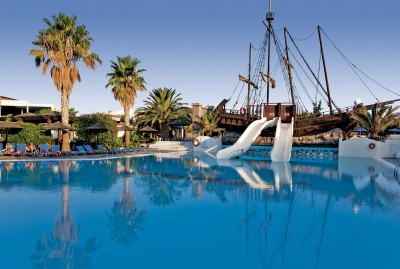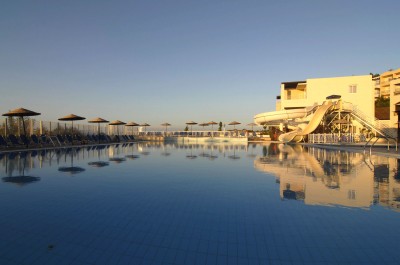|
|||||||||||||||||||||||||||||||||||||||||||||||||||||||||||||||
|
Kos Island (Homeland of Asclepios and Hippocrate)
Kos Island (Homeland of Asclepios
and Hippocrate) lies very close
to the West Turkey and 201 nautical
miles from Piraeus. It has an area
of 290 sq. km., a coastline of 112
km. and a population of 20,000. Kos
can be reached by air from Athens
and Rhodes or by ferry from Piraeus,
Rafina, the Cyclades, the islands of
the northern and eastern Aegean,
Kavala, Crete, Rhodes and the other
islands of the Dodecanese. Kos was
inhabited in prehistoric times.
Around the 14th century BC, arrived
in the islands the Minoans from
Crete. A few centuries later, the
Dorians started to arrive. Around
700 BC they built the ancient city
of Kos, which together with Lindus,
Cameirus, Ialysos on Rhodes, Cnidus
and Halicarnassus in Asia Minor
formed the so-called Dorian
Hexapolis.
The ancient Greek god Asclepios,
was worshiped in ancient times
as a patron of health and healing.
The cult of Asclepios originated on
the island of Kos and gradually
spread throughout the whole of
Greece and Asia Minor. In the
classic Hellenistic period, shrines
to Asclepios could be found in many
towns – around three hundred are
known to date.
 The conference will be held at the Kipriotis Village of Kipriotis Hotels & KICC. Download this comprehensive guide to find out more about the conference venue and accommodation.
How to get there
Kos can be accessed by air directly from several major
European airports and from Athens International Airport
“Eleftherios Venizelos”. If you are thinking of
travelling by sea from Athens to Kos, you may take a
ferry from Piraeus port, which is the closest port to
Athens airport. Kos is close to Rhodes (approx. 2hrs by
ferry) and about 40 minutes from the Turkish town of
Bodrum.
Following you can find detailed information on how to
get to Kos Island and the conference venue.
By AirGeneral InformationThere are scheduled flights to Kos from Athens as well as charter flights from major European cities. 5 to 7 flights leave daily from Athens International Airport “Eleftherios Venizelos” to Kos airport and flight time is approximately 50 minutes. Kos is also connected with Heraklion, Crete via 3 weekly flights. Please book your domestic flights (from Athens to Kos) well in advance as July is high season and many people (apart from the large number of WSEAS delegates) will be booking during this period. Domestic Flights see www.olympicair.com and www.aegeanair.com Charter Flights Charter Flight Information from various European countries to Kos*
Airport & Airline Contacts Airports: ATHENS INTERNATIONAL AIRPORT S.A. "ELEFTHERIOS VENIZELOS" Spata, 19019, Greece Airport call center: +30 210 3530000 Airport company call center: +30 210 3531000 Airport company facsimile: +30 210 3530001 Email: airport_info@aia.gr URL: http://www.aia.gr KOS INTERNATIONAL AIRPORT “HIPPOCRATES” Kos, 85 302, Greece Tel: +30 22420 56000 URL: http://www.hcaa-eleng.gr/kos.htm Airlines: see www.olympicair.com and www.aegeanair.com

|
|||||||||||||||||||||||||||||||||||||||||||||||||||||||||||||||
|
|
|
|
|||||||||||||||||||||||||||||||||||||||||||||||||||||||||||||
| copyright - designed by WSEAS | |||||||||||||||||||||||||||||||||||||||||||||||||||||||||||||||














